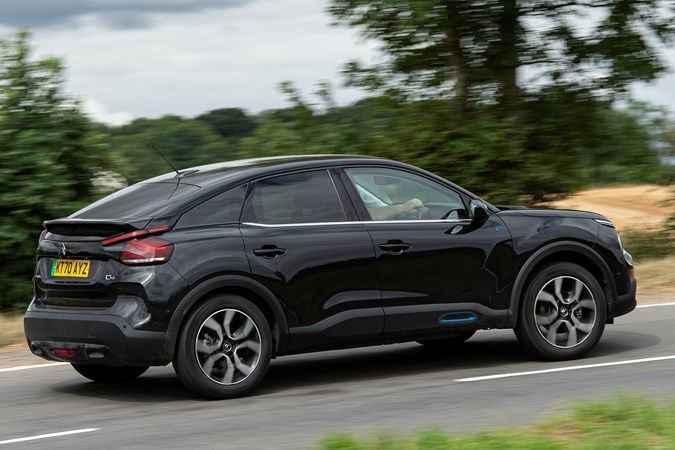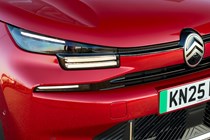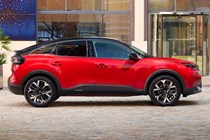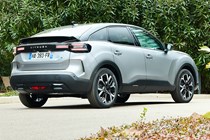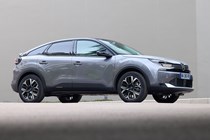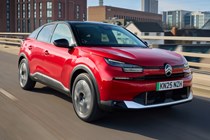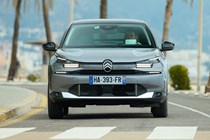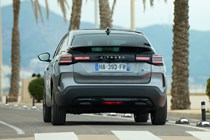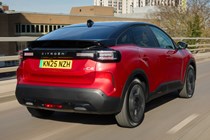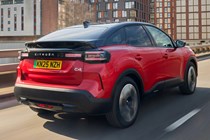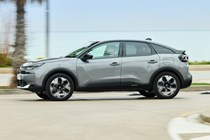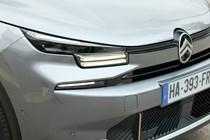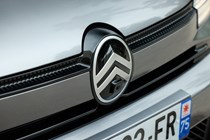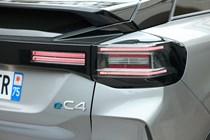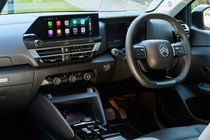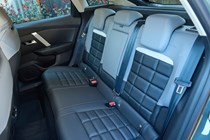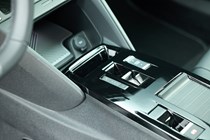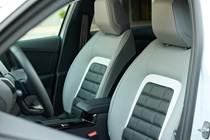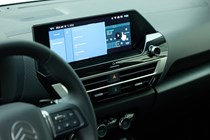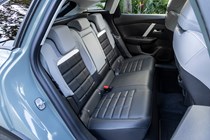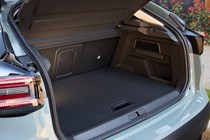
Citroën e-C4 long-term test
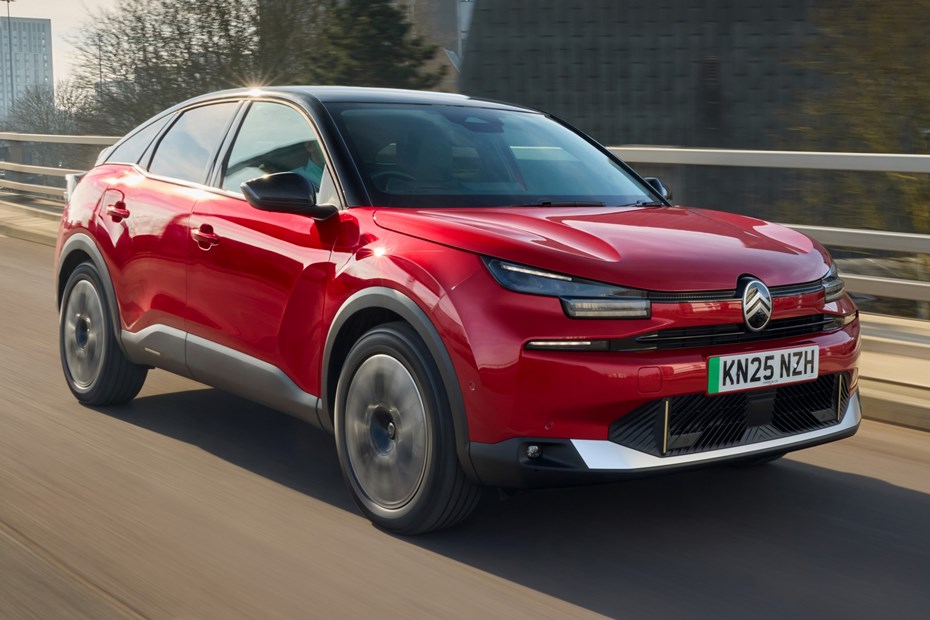
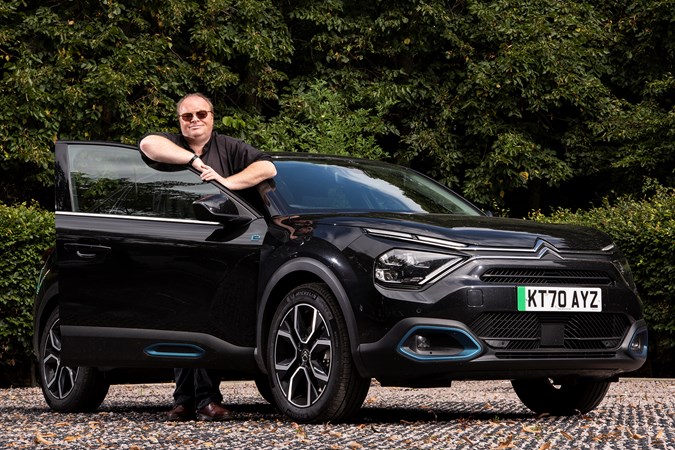
Parkers on living with Citroen’s electric hatchback on a long-term test. Murray Scullion and Keith Adams are your guides. This review is broken down into chapters – use the links below to navigate between them if you don’t fancy reading the whole article...
- Update 1: Welcome
- Update 2: Performance and handling
- Update 3: Distance and range
- Update 4: Petrol vs electric and diesel vs electric
- Update 5: Interior and comfort
- Update 6: Video – petrol vs electric C4
- Update 7: Verdict
Update 1: Welcome
Murray Scullion introduces the Citroen e-C4’s six-month review…
Thanks for making it all the way to the long-term page. Here you’ll find out what the e-C4 is like to live with day-to-day because I’ll be doing just that for six months. Before I start, I suppose I should set out some goals. The big questions to answer in this long-term report are: how does it stack up against the competition? And would I recommend one?
The final thing to answer is, what’s an electric car like to live with? Being a city-dwelling millennial, an electric car should fit into my lifestyle. So I’m looking forward to finding out if it does.
Oh and of course, we’ll do some testing against its big rivals. The e-C4’s biggest competition comes from the Peugeot e-208, Peugeot e-2008, Vauxhall Corsa-e and Vauxhall Mokka-e. Under the bodies, all four of these cars and the e-C4 share the same basic mechanical components. So it should be pretty close.
What about the spec?
I’ve gone for a Shine Plus model. It’s a top-spec car and starts from just under £33,000, or around £400 per month with a deposit of £4,000 or so. The e-C4 is a really unusual looking thing. Whereas Vauxhall and Peugeot have gone with electric superminis and electric crossovers, Citroen has gone for a design straight down the middle.
It’s slightly higher-riding than a traditional supermini, but has an almost coupe-like silhouette. I think it looks superb. This one is in Obsidian Black (a £545 extra) which I think sadly hides a few of its nice design touches.
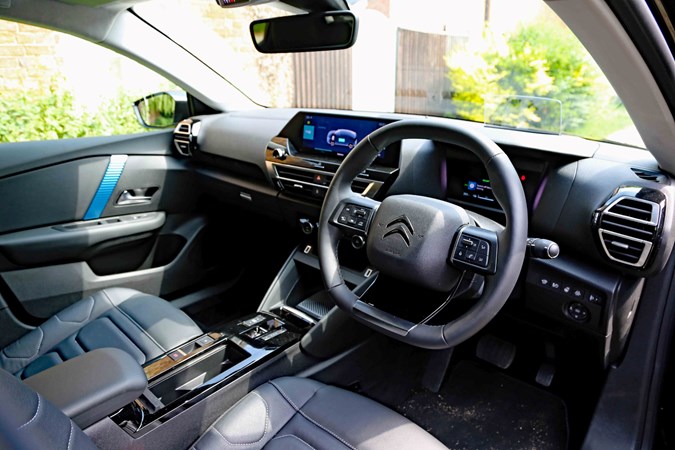
Highlights of our car:
The e-C4 I have is a great spec. On paper, these are the things worth writing home about:
- 18-inch alloy wheels
- Blind spot detection
- Apple CarPlay/Android Auto
- Reversing camera with top vision
- Head up display
Battery
Let’s talk about propulsion. There’s only one power option for the e-C4 – a 50kWh battery and a 136hp electric motor. Officially, the range is 217 miles. From driving other electric cars with the same battery, I’ll suggest now that I won’t get close to that. But time will tell.
From a 7.4kW public (or domestic) charger it takes 7 hours and 30 mins. It’s also capable of rapid charging on a 100kW charger to 80% in 30 minutes. You can charge it via a three-pin socket, but that apparently takes 24 hours.
Performance figures show the car’s 0-62mph time at 9 seconds flat, while the top speed is limited to 93mph. Although I’ve driven plenty of electric cars, I’ve never lived with one. I’m looking forward to experiencing range anxiety and seeing just how much I experience it over six months.
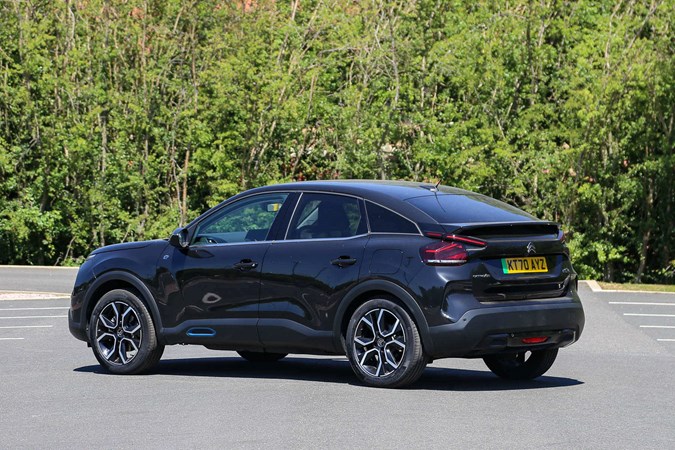
Update 2: Performance and handling
Murray Scullion explains how it drives… and how far it goes.
I’ve been living with the e-C4 for more than a month now, so it’s probably about time I start adding some performance testing to this equation. I’ll start with the good. A few reviews I’ve read describe the e-C4 as slow. And it’s just not. Obviously it’s not Tesla quick, but the 0-62mph time of 9.7 seconds is a) respectable and b) achievable.
More relevantly, it can do the 0-30mph sprint in 3.4 seconds, which is so much more useful for a car like this. Some electric cars (looking at you Volvo XC40 Recharge) are really quick, and while this is impressive, I can’t help but feel most customers just don’t care.
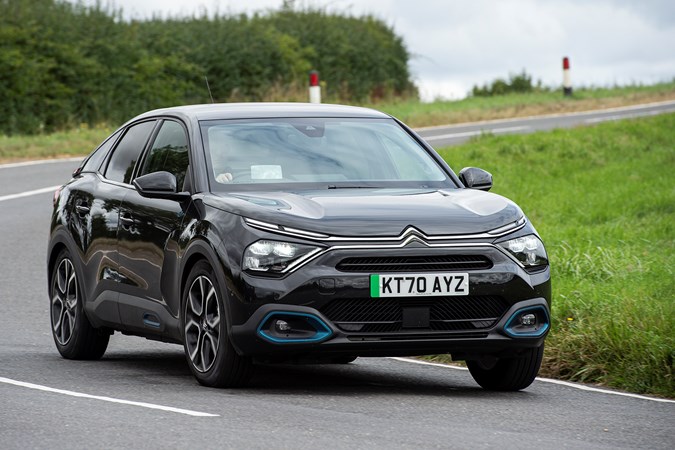
Now for the bad. To me, the most pertinent aspect of an electric car is how far it can go between charges. And the most I’ve got out of the e-C4 is 150 miles. A lot of my journeys involve motorway driving, so perhaps I’m not the typical e-C4 buyer. But 150 is way off its 217-mile claimed range. This lack of mileage ability brings with it range anxiety. This is basically a fear that you won’t get to your destination without running out of charge.
At one point after driving a few Teslas I thought this phenomenon was a relic of the past, but the e-C4 proves it’s still a thing. I think the main problem is the range indicator. Whenever it’s fully charged it cheerily tells me that the range is 217 miles. Which is just nonsense. In city driving it tracks straight and true (I do a mile and it takes a mile from the indicator) but as soon as I hit a swifter road it falls faster than Matt Hancock’s approval rating.
On one sunny weekend I had somehow managed to accrue three different sets of plans covering 475 miles. I knew about the car’s range, and organised relevant charging spots.
But because of the range indicator’s unwillingness to indicate accurately, it just never felt relaxing, even though I was never pushed for time. There was always a what lurking in my mind. What if there are roadworks? What if I need to divert to a longer route? What if that range indicator starts declining even more quickly?
Drive modes and regenerative braking
There are three drive modes on offer. Eco, Normal, and Sport. Eco is full on power save mode. It limits acceleration and some of the climate control options. Sport gives you full power and less range. Normal sits in the middle.
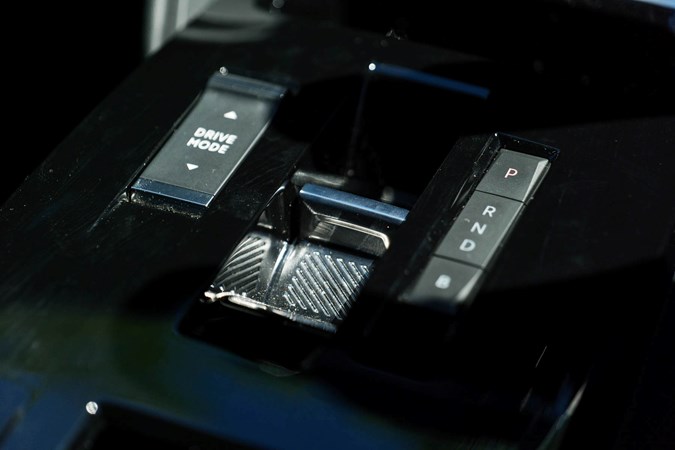
There is a distinct difference between all three. In Sport especially there is a marked performance increase from 0mph. The car’s underwhelming range leads me to stick it in Eco for most of my journeys.
There’s also a B mode. This activates full-on regenerative braking mode. When you lift off the accelerator the kinetic energy loss helps re-charge the battery. Sounds complex, but it isn’t. I put it in this mode for every journey. Annoyingly, I can’t figure out how to make it automatically switch this on.
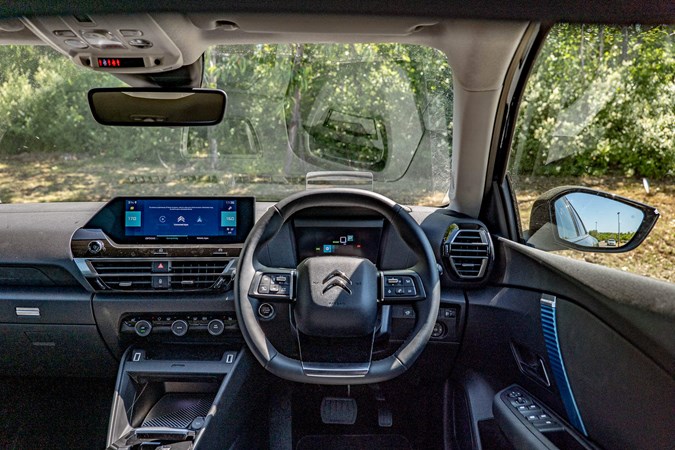
What about the handling?
The above sounds like a massive moan so I will give the e-C4 a compliment. Over the course of a month I think it’s somehow become even comfier. Its battery might not like the motorway, but the rest of the car certainly does. I think Citroen’s ‘Advanced Comfort’ seat really helps. There’s lots of padding but it never feels hard.
The comfort at motorway pace is remarkable given how at home it feels at low speeds. It shrugs-off speed bumps that would make a big SUV wince and noise is barely allowed to make its way to the driver’s eardrums.
The yin to the comfort’s yang is the handling. There’s considerable bodyroll, which means when you turn into a large roundabout at 30mph you will feel the car go one way and your body the other.
If you’re a really keen driver this might annoy you. But it’s the sort of thing you acclimatise to quickly and shouldn’t put you off buying one if comfort is a priority.
Update 3: Distance and range
Keith Adams takes the reins of the Citroen e-C4, and breaks it in with a trip to the Lake District…
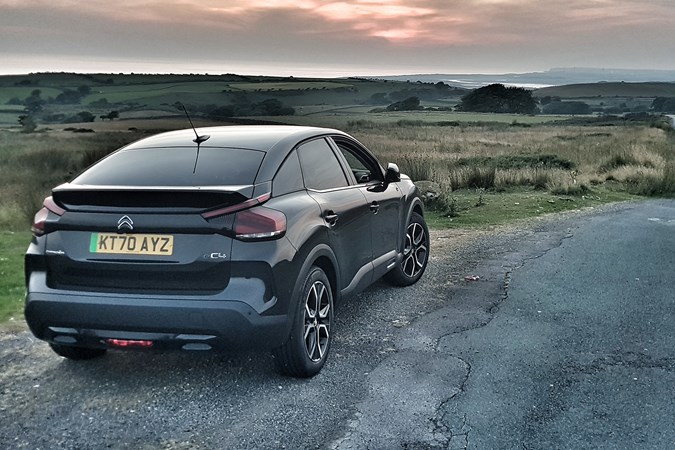
My name is Keith Adams, and I have a confession. I’m a (not so) closet fan of Citroen. During my 30+ year driving career, I’ve owned literally dozens of the things, and love them deeply, even when they have the power to infuriate. The e-C4 has fascinated me since launch, as it’s clear the company’s on form in terms of design and prioritisation of comfort, and in my test drives, I’ve not been disappointed by the new car.
Getting this car off Murray was long overdue, and to celebrate, I thought I’d break it in with a run to my significant other’s place in the Lake District. So, with the boot loaded, and an indicated 217 miles on the DTE (Distance to empty) display, I headed north. And, my word, is this car comfortable. I cannot think of anything offered for similar money that comes anywhere close to the e-C4 for absorbing road imperfections and noise – it truly is brilliant at this. Bravo!
However, it’s not all sweetness and light. As Murray reported above, the range drops off markedly once you’re underway, sometimes gobbling up range at a rate of 2:1 compared with the actual miles covered.
To cut a long story short, I ended up stopping twice (once in Stoke-on-Trent) and in Lancaster, but only because I needed to have a goodly amount of range when I reached my destination. I could have done it on one stop, and saved time, but left myself ‘dry’ once I’d hit the coast, and I didn’t fancy that as public charging is a bit rubbish in Cumbria. And that meant for my 250-mile drive, I took six, rather than four-and-a-half hours…
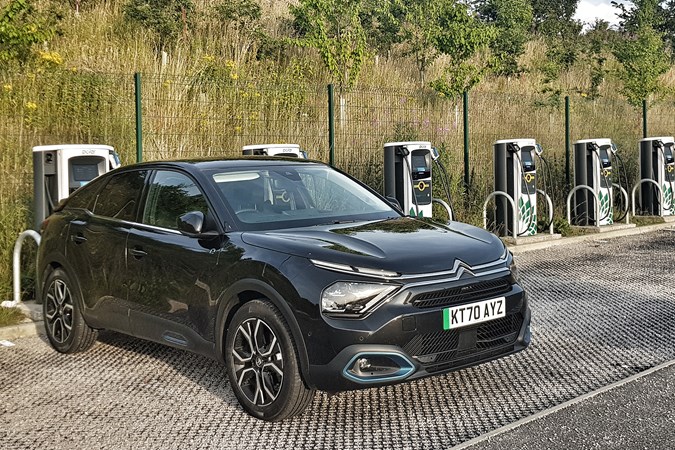
So, what’s going on with that range indicator?
With a real-world range of 150-160 miles, the e-C4 is in the same ballpark as many of its rivals, ID.3 aside. And I can live with, and plan around, that. But the range indicator is woefully optmistic, and for those less used to EV driving, the drop off in range while driving can be alarming, hence Murray’s anxiety (above).
The reason for this is simple: when it’s fully charged, it shows the maximum potential range as reported in the WLTP figures for the car – 217 miles. Unlike most other EVs, which calculate a range based on how it’s been driven historically, this can set false expectations in even the most battle-hardened EV drvers. With familiarity, I end up watching the battery level gauge, not the distance, and it seems more consistent to do so.
In other words, the distance to empty can only be relied upon the closer to being emptied the battery is – which compared with the hyper-accurate calculations in a Kia e-Niro or Volkswagen ID.3, that’s disappointing.
When I invited Citroen to comment, a spokesman said: ‘All our brands have a range simulator on line, objective is to make users aware of potential variability of range according to use and external duty conditions. There’s a link here to the Citroen page… it can be found half way down the page and looks like the below…’
As you can see, the anticipated motorway range on a fine day is 134 miles.
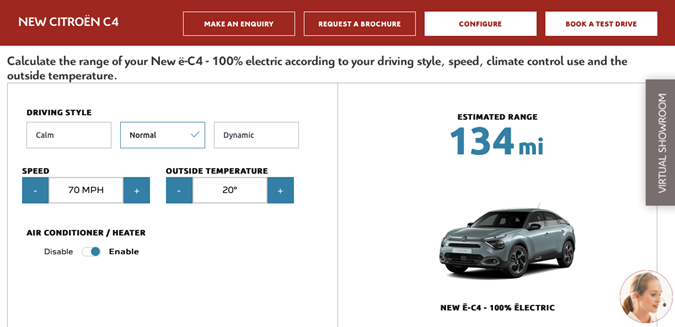
Moving on…
Anyway, I made it to the Lakes, relaxed and benefitting from the genuine comfort and silence this car delivers. And that is very much the point of the e-C4 – to coccoon you in a blanket of serenity – and it delivers that in spades, which pleases me no end. I just wish that the public network of chargers did this car justice.
Experience and time spent will no doubt alleviate that disappointment.
Update 4: Comparing with petrol and diesel C4s
Keith compares his e-C4 with petrol and diesel, and does the sums…
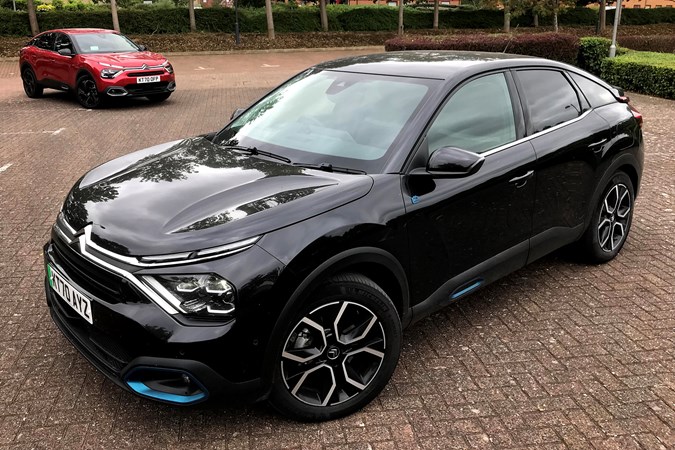
Citroen C4 petrol vs e-C4 electric
My colleague Curtis Moldrich, editor of CAR magazine’s website is running a petrol C4 as his long-termer and I’ve been wanting to do a little swap with him as well as comparing our cars back to back. Very interesting it was too. Now I’m fully up-to speed with the e-C4, and now take its incredible refinement for granted, jumping into Curtis’s C4 and firing it up felt like stepping back five years.
Not that there’s anything wrong with the Puretech in his car – it’s a fine engine. But compared with no engine at all, it’s a source of irritation I wasn’t really aware of before. On the road, the e-C4 also wipes the floor with the C4, both in terms of refinement and comfort, but also performance and response. It feels more eager, quicker off the mark and settled at speed. It doesn’t turn-in quite as keenly, but then again, neither are performance cars.
Of course, the C4 will cover an easy 400 miles a day on the motorway on one fill-up, whereas the e-C4 will do 134 according to Citroen, which is quite a difference if you’re a long-distance driver. Cost is always a consideration – in September 2021, a petrol C4 starts at £231 to lease, while the e-C4’s lease deals come in from £287, so you’ll need to cover some miles to claw back that £50 per month, despite homecharging being so much cheaper than petrol.
The conclusion, therefore, is an easy one. If you’re someone who generally does less than 100 miles a day, but uses your car regularly, the finances stack up in favour of electric (if you lease), and you get a better car to drive.
Citroen C4 diesel vs e-C4 electric
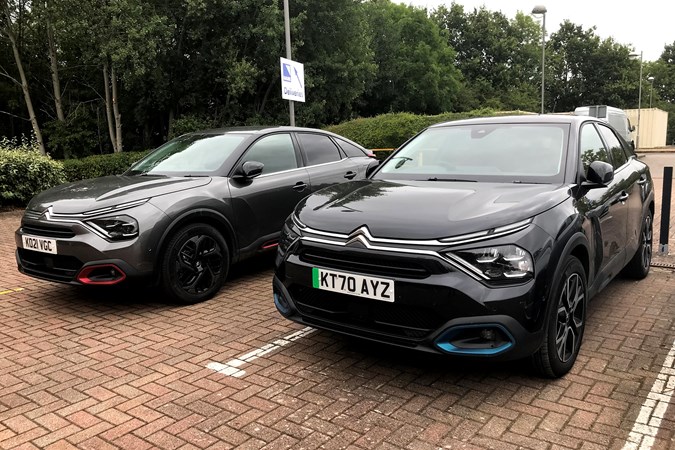
I’ve also compared the diesel C4 with my e-C4, and that coincided with a long and last-minute trip I needed to take to Scotland. When it came down to while car to take, there was no question it was going to be the diesel – with an easy 600-mile range and a potential 60mpg, it would be significantly quicker (but not cheaper) than had I taken my e-C4.
But that’s hardly a surprise really. Again, after the e-C4, firing up a diesel sounds almost barbaric after the blissful near-silence. On the road, the differences between the two are – like the petrol – dominated by their power sources. The Blue HDI under the bonnet of the C4 is an excellent power unit, but you can tell it’s heavier than the petrol, so feels a little more lead-footed on the road, while refinement takes a knock. But on the motorway, the diesel settles down and there’s little in it.
The verdict here is more interesting. Again, it wins hands down in terms of ease if you’re a long-distance driver, although the fuel consumption advantage closes up a little (espcially compared with public charging), and that means it’s a better bet than the petrol on that score. The best way of comparing them is by using the Parkers Miles Per Pound figures to see how far they go for your money.
- Citroen e-C4 miles per pound (homecharging): 24.7 – 27.3 MPP
- Citroen e-C4 miles per pound (public charging): 12.3 – 13.7 MPP
- Citroen C4 (130hp) diesel miles per pound: 9.8 – 10.7 MPP
- Citroen C4 (130hp) petrol miles per pound: 7.5 – 8.5 MPP
Conclusions: petrol vs diesel vs electric
That’s easy. It comes down to what you need your car for. If you do between 50-100 miles a day, you’re leasing your car and you have access to a homecharger, then the electric e-C4 is for you. Jump through those hoops, and there shouldn’t be a barrier to owning an EV for you. In the case of the e-C4, it’ll give you the quietest, most refined car this side of an E-Class.
However, if you regularly travel long distances, then it’s a no-brainer to take the diesel. The convenience and restfulness makes it a great option, and better suited to those 300-mile days than a petrol. Which leaves the petrol version in the middle ground – offering the best handling and steering, but giving way to the undeniable positives of the other two.
Update 5: Comfort and refinement
Keith considers how comfortable the e-C4 actually is…
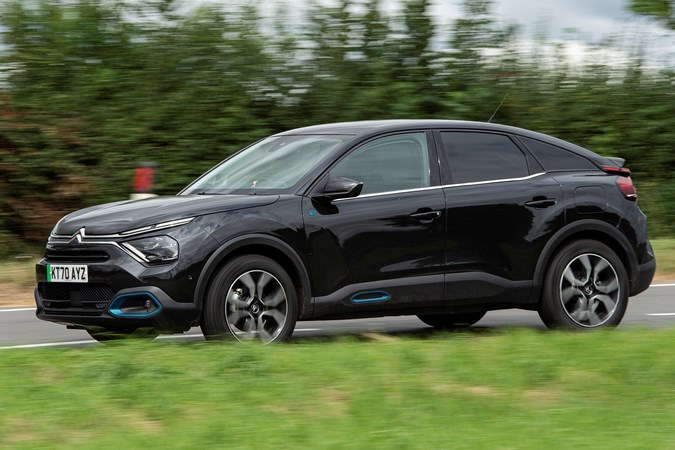
Citroen has been working hard in recent years to re-establish itself as the maker of the most comfortable family cars for your money. But it’s really since 2017 with the appearance of its first Advanced Comfort prototype that the firm’s efforts have been brought to the fore – first in the C3, then the 4 Cactus and C5 Aircross.
Of course, for a Citroeniste like me, this has been central to the company’s DNA since the launch of the DS with its soft Hydropneumatic suspension, which first appeared back in 1955. The question of ride comfort hasn’t been properly addressed by most manufacturers for years – which is odd, considering that road surfaces are getting worse, and we’re spending more time in our cars than ever thanks to the roads getting busier and busier.
So it’s great that the e-C4 comes equipped with the full suite of Citroen Advanced Comfort features – soft springing, soft seats and impressive soundproofing. But does that make it convincingly more comfortable than its rivals?
Is the e-C4 really comfortable?
In a word, yes. I’ll go further than that – it’s the most compliant riding car in its class by quite a margin, with the spooky ability to absorb bumps that I’d genuinely concluded that the car industry had long forgotten. As soon as you’re rolling, the soft ride dominates your senses – road surfaces are magically flattened, potholes are laughed off, and speed humps do little to disturb your equilibrium.
Comfort isn’t just about ride comfort, though. The seats are well-sized and shaped, and are also supremely luxuriant in their ability to soothe. The driver’s seat is not particularly soft, but it moulds to your shape and supports in all the right places – the nearest comparison I can make is sleeping on a bed equipped with an expensive memory foam mattress.
The other area where the e-C4 excels is in its lack of road and wind noise. Obviously, being an EV, there’s no traditional engine noise to contend with, but the way it’s insulated from wind and road noise is very impressive indeed. If you’re looking for a serene way of travelling across the country, this really is the best EV for your money.
How does it compare with other EVs?
The e-C4 is remarkable for being so far ahead of the Peugeot e-2008 and Vauxhall Mokka-e, as the three share a vast number of parts under the skin. It feels a little less wieldy in corners, but once you’re used to its bodyroll and accept that there’s good body control beyond its propensity to heel over in bends, a set of twisties won’t really slow you down.
What has been interesting is comparing it with other, more expensive, electric SUVs. For instance, you’d expect the more expensive Mercedes-Benz EQA to see it off in terms of refinement, but you’d be wrong. It’s not bad at all, but the Citroen rides better and is quieter at speed. The BMW iX3, which costs almost twice as much as the e-C4 is closer in terms of refinement, even if it doesn’t ride as well.
How about the much-vaunted Parkers Car of The Year-winning Skoda Enyaq iV? Considering the Czech firm has majored on ride comfort in recent years, it’s also outclassed in this department by the Citroen. It rides almost as well, but still seems less settled on undulations, and it can be caught out by potholes and expansion joints in a way the e-C4 simply doesn’t…
Conclusions: Comfort and refinement
If you want the most comfortable and refined family car for your money, buy a Citroen e-C4. Nothing comes close. Seriously…
Update 6: Video – petrol vs electric C4
Keith shares the Parkers video which explains the differences between petrol and diesel in plain English.
Update 7: Verdict
Keith considers whether you should actually buy a Citroen e-C4
Well, the numbers are in and the impressions have been made. In nine months of running a Citroen e-C4, we can now confirm that it is likeable, easy to drive and super-comfortable car that we can recommend. With some reservations.
Let’s get the good stuff out of the way first. There really is nothing to touch it in terms of ride and seating comfort for the money. So if you value calmness and serenity over a sporty drive, this is the car for you. All C4s are quiet and comfortable, but the electric version takes that to a whole new level, and we really appreciate the fact it exists.
Sadly, a lot of this good work is undone by the car’s unimpressive battery range and propensity to be over-optimistic when reporting how far it has to go on a charge. This eases with familiarity, but there’s no escaping that there are cars that go much further for less money out there, which is surely a big part of EV ownership. Citroen has announced some changes, which will improve the range, but until it can deliver an easy 200+ miles on a charge, this is still a significant failing of this car.
| Citroen e-C4 Shine Plus |
|
| Current mileage | 6,691 |
| Electrical efficiency | 3.3kW per mile |
| Parkers real-world range | 170 miles |
| Parkers ‘MPP’ (Miles Per Pound) calculation | 7.4/21.5 (home/public charging) |
| Car joined Parkers fleet | July 2021 |
